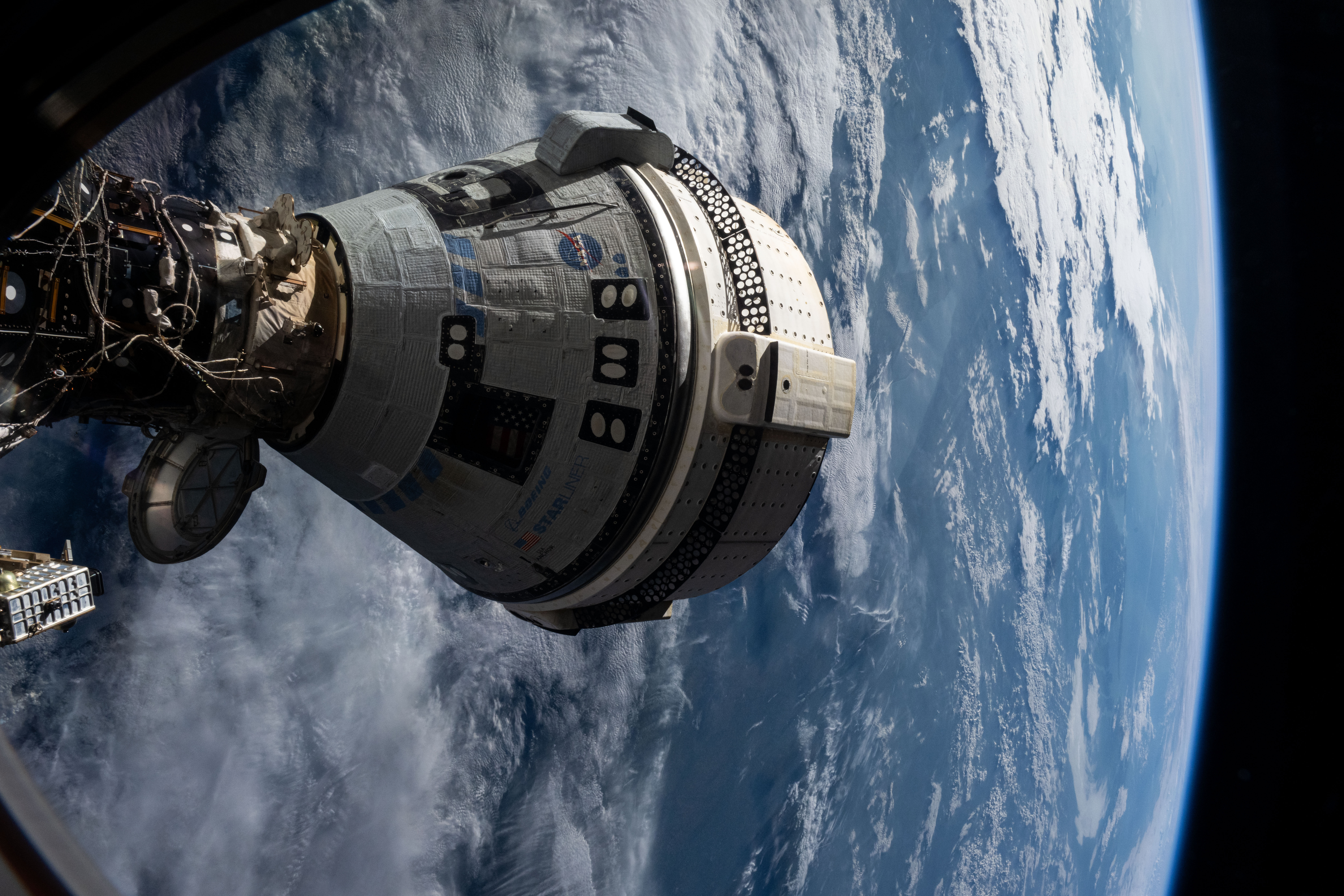
Photo credit: NASA
Engineering teams with NASA and Boeing completed a hot fire test of the Starliner spacecraft’s reaction control system jets on July 27 to evaluate the spacecraft’s propulsion system. NASA astronauts Butch Wilmore and Suni Williams, assigned to the agency’s Boeing Crew Flight Test, were seated inside the docked spacecraft during the test as part of preparations before their return aboard Starliner from the International Space Station.
The test involved firing 27 of the spacecraft’s 28 jets for short bursts, moving through them one at a time to check thruster performance and helium leak rates. Preliminary results show all the tested thrusters are back to preflight levels based on thrust and chamber pressure.
As part of the test configuration, all helium manifolds, which control and direct the flow of helium, were opened allowing engineers to continue evaluation of Starliner’s helium supply and leak rates. The teams verified Starliner continues to show the margin needed to support a return trip from the station. Following the test, the helium manifolds were closed and will remain closed until Starliner activates its propulsion system ahead of undocking. Teams also will verify the helium leak rate before Starliner undocks.
Teams are taking their time to analyze the results of recent docked hot-fire testing, finalize flight rationale for the spacecraft’s integrated propulsion system, and confirm system redundancy ahead of Starliner’s return to Earth from the International Space Station.
While ground teams work to finalize Starliner’s return to Earth, Wilmore and Williams continue to work alongside the Expedition 71 crew, assisting with science investigations and maintenance activities. On July 29, Wilmore and Williams entered their spacecraft and checked its water systems, called down to Boeing mission personnel for a conference, and put on their space suits long enough to perform a pressure test. Wilmore started his morning in the Harmony module, assembling the BioServe centrifuge as Williams reviewed procedures for operating the Astrobee free-flying robotic assistants.
For the latest mission updates, follow the commercial crew blog, @commercial_crew on X, and commercial crew on Facebook.







